Sign up for daily news updates from CleanTechnica on email. Or follow us on Google News!
I was a research scientist at the NASA Goddard Space Flight Center for 30 years. I retired in 2005. While I was at NASA, I had ample time to see the evidence of global warming. With satellite imagery, we observed a nearly ice-free Arctic Ocean in the summer for the first time in recorded history. Our satellite images also observed the continuation of ~90+% of mountain glaciers in the world retreating over the last 50 years. I have also seen the data from the atmospheric carbon dioxide monitor on Mona Loa in Hawaii that shows steady increases in CO2 to levels not known for millions of years. I believe the calculations by atmospheric physicists that this anthropogenic increase in C02 is resulting in global warming. I also believe the conclusions of Mark Jacobson of Stanford University (and occasionally CleanTechnica) that it is feasible and economically advantageous for the world to convert 80% of all energy production to PV solar and wind and maintain another ~15% from hydroelectric. He also explains how it is feasible and most efficient to convert virtually all manufacturing, transportation, heating and cooling to electricity.
What can our family do to make our small contribution to reducing global CO2 emissions at the personal level? I will recount the efforts that we have made over the last 10+ years, as well as some of the implications and some of the areas where I’ve not been able to take action.

Our Clean Energy Actions Over the Last 10+ Years:
- ~2010: Over a period of time converted all my home lighting to compact florescent.
- 2014: Leased an 81-mile range 2014 Nissan Leaf ($200/month)
- 2015: Installed 20 solar panels on my house in Utah (See Figure 2)
- 2016: Leased a 107-mile range 2016 Nissan Leaf (See Figure 2)
- 2017: My brother purchased a Tesla Model S
- 2017: Purchased a 150-mile range 2017 Nissan Leaf
- 2018: My daughter purchased a Tesla Model X
- 2019: Purchased a 310-mile range Tesla Model 3 (See Figure 1)
- 2020: Converted 100% the lighting of both my homes to 90% more efficient LED bulbs
- 2020: My daughter bought an electric golf cart (See Figure 4)
- 2024: My brother traded in his Tesla Model S for a Model Y
- 2024: Purchased an electric golf cart
- 2024: Purchased a battery electric leaf blower
- 2024: Purchased an electric lawnmower for $650 (See Figure 3)
I have also purchased 5 battery-electric bicycles over 10 years, which help me keep in shape at age 84 but make little difference from a clean energy standpoint. I have abandoned two of them at the moment because it is too expensive to fix them. In one case, the batteries are no longer available and I would have to have the battery rebuilt.
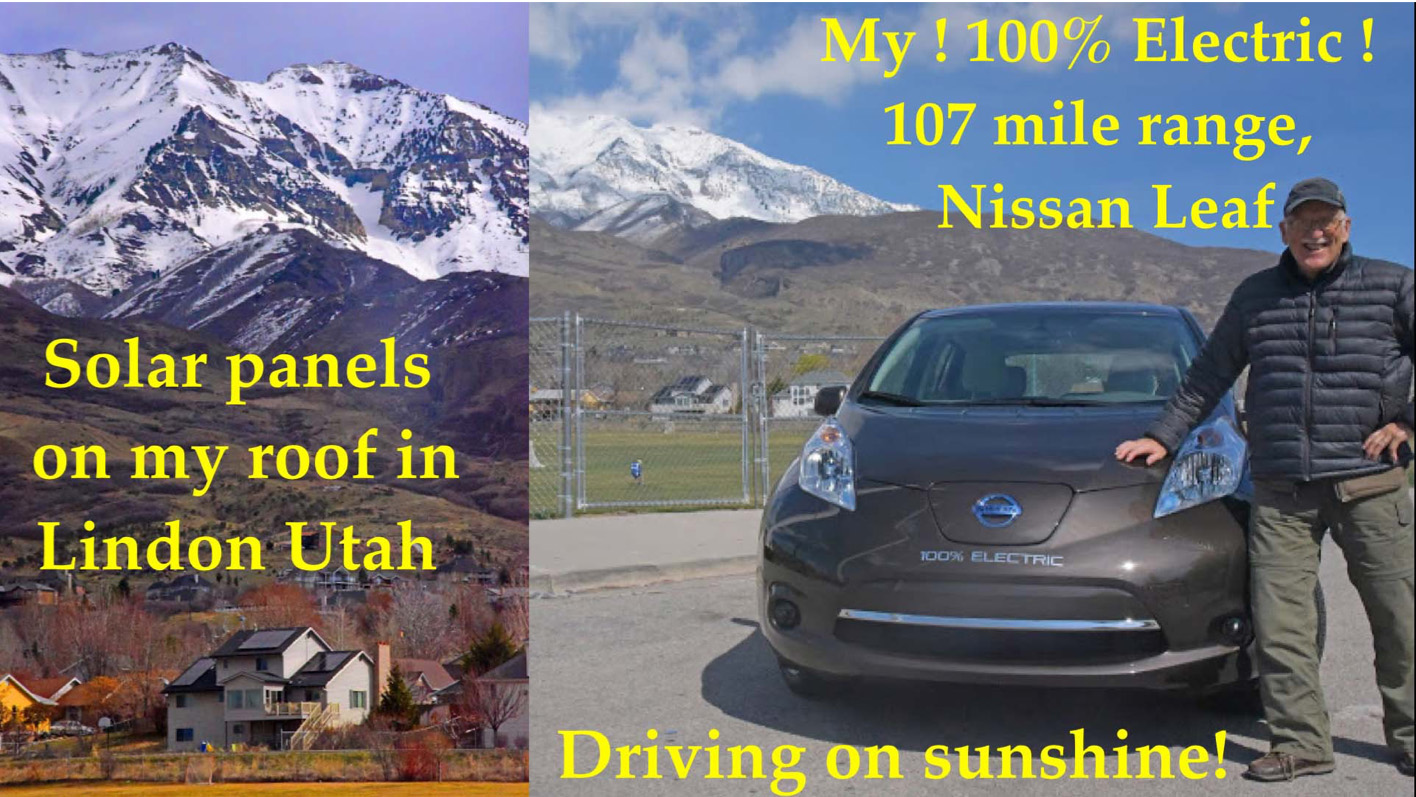
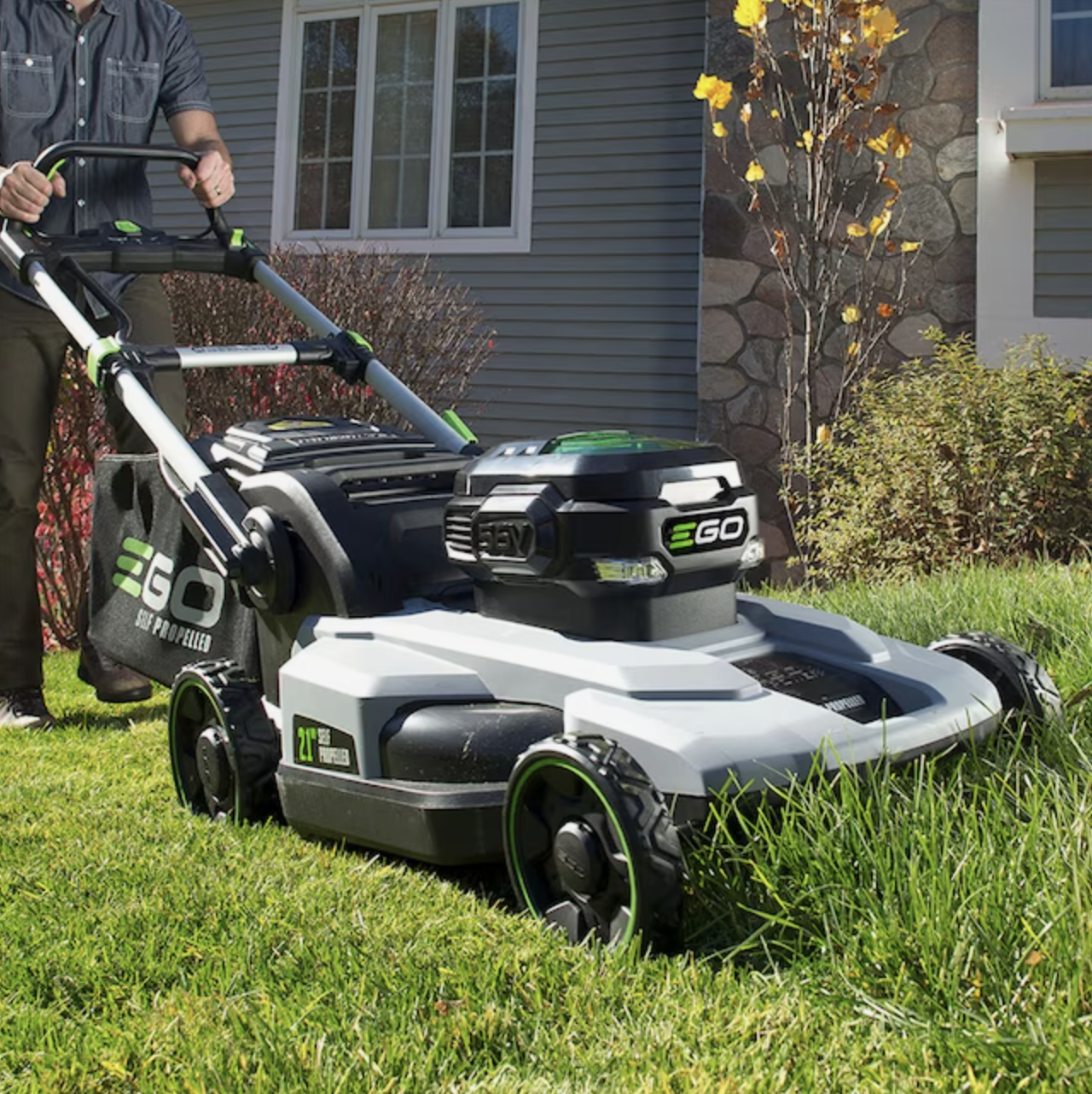
What are the implications of these efforts and how has my life changed as a result?
We don’t claim to be 100% clean energy users. Our houses still use fossil gas. We also have boats and beater cars that use gas. However, we have made extraordinary efforts to convert 90% of our automobile use to electric and have converted other use to electric when possible.
I will never forget wearing all my ski clothes — including warm boots, ski pants, parka, balaclava, and gloves — in the winter to stop energy use for heating in that first Nissan Leaf, and still having to charge in Salt Lake City on the 90-mile round trip from our house near Provo to the Salt Lake International Airport. Our Model 3 now drives us to the airport and back almost perfectly autonomously, and we don’t even think about range.
Upgrading to 107-mile and 150-mile range Leafs made local travel easier, but cross-country travel was still impossible. The purchase of a long-range Tesla Model 3 and the existence of Tesla’s amazing Supercharger network made EV cross-country travel almost as easy as it had been with our gas cars.
We have remodeled a 125-year-old cabin on a lake in Northern Wisconsin. We spend 5+ months there in the summer, so we commute to Wisconsin in the spring and back to Utah in the fall. We had a Toyota Highlander gas car with a rocket box on top and sometimes we even pulled a trailer (see Figure 1). We did what I call kitchen sink travel. If you could think of it, you took it. Now, with our small Tesla Model 3 sedan, if it doesn’t fit, we don’t take it. The exceptions are my two electric bikes. When I can afford it, I will buy two more so we don’t need to transport them back and forth. Note: It took us three days to make the 1,523-mile trip from Lindon, Utah, to Three Lakes, Wisconsin, in the gas car, and it takes us three days in our EV.
Electric lawnmower implications: My son mows our lawn and he didn’t want to buy an electric lawnmower to replace our gas mower that died. He wanted to be able to do the whole lawn at one time. With our new EGO electric lawnmower, we need to break the job up into two parts. I thought I would eventually buy a second battery. However, a second battery would cost $350, so that won’t happen soon. The positive part: My 12-year-old grandson is nuts about the performance of the electric lawnmower and he is happy to do the job.
Solar panel implications: Auric Solar, which sold us the panels, has been out of business for years. The panels no longer report production and I only know from my low electricity bills that they are still working. My electricity bill can be as low as $9/month in the spring when production is high and demand is low. Even in the winter when the days are short, the sun angle is low, and snow sometimes covers my panels, my bill is never over $100/month. However, our roof is now almost 30 years old and we will have to remove and reinstall the panels when we redo the roof soon. We live in the middle of a forest in Wisconsin, so we can’t install solar panels there because the trees block out the sun. Our bill there is usually over $300, but that includes the hot tub, charging the EV, and doing numerous loads of dishes and laundry when our summer guests are there. We have a very high electric bill in spite of not having air conditioning because of the cool climate.
LED lighting implications: 5 years ago, IKEA was selling 5-watt LED bulbs for 50¢/piece. I found that the 5-watt LED bulbs were quite adequate for replacing 60-watt incandescent bulbs. I purchased over 100 bubs and converted 100% of my lighting in Utah and Wisconsin to LED. LED bulbs are supposed to have a life of about 20 years. While most of my LED bulbs are still working, a number have failed in less than 5 years.
Electric golf car implications: My daughter, my wife, and I are such clean energy advocates that when buying golf carts, we only consider electric. They are used for neighborhood travel on our local very low-traffic roads.
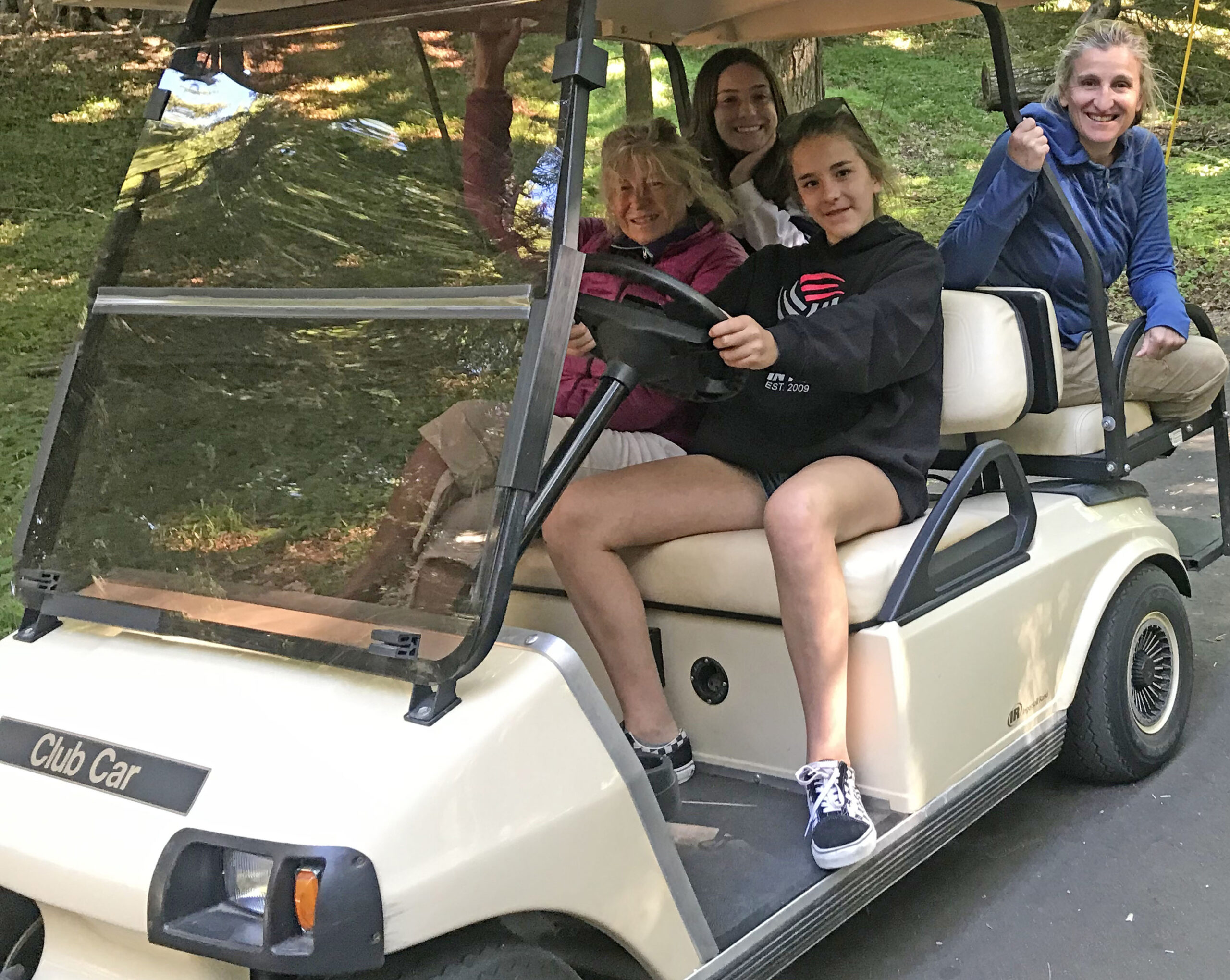
Clean Energy Actions We Have Not Taken: We have a small Alumacraft boat in Wisconsin which was powered by an old 15 hp, two-stroke, manual-start outboard motor. With a two-stroke motor, you add the lubricating oil to the fuel and burn it. Two-stroke motors emit so much pollution that they are no longer legal. Ours would no longer start, so we needed a new motor. Electric outboard motors are just coming into vogue and I wanted to buy one. However, a 3.5-horsepower Mercury electric outboard motor costs $3,510 and has only a one-hour run time. A 15-horsepower electric outboard costs much more. As a result, we purchased a new 15 hp, electric-start, 4-stroke, low-emission Mercury outboard for $2,400. (See Figure 5.)
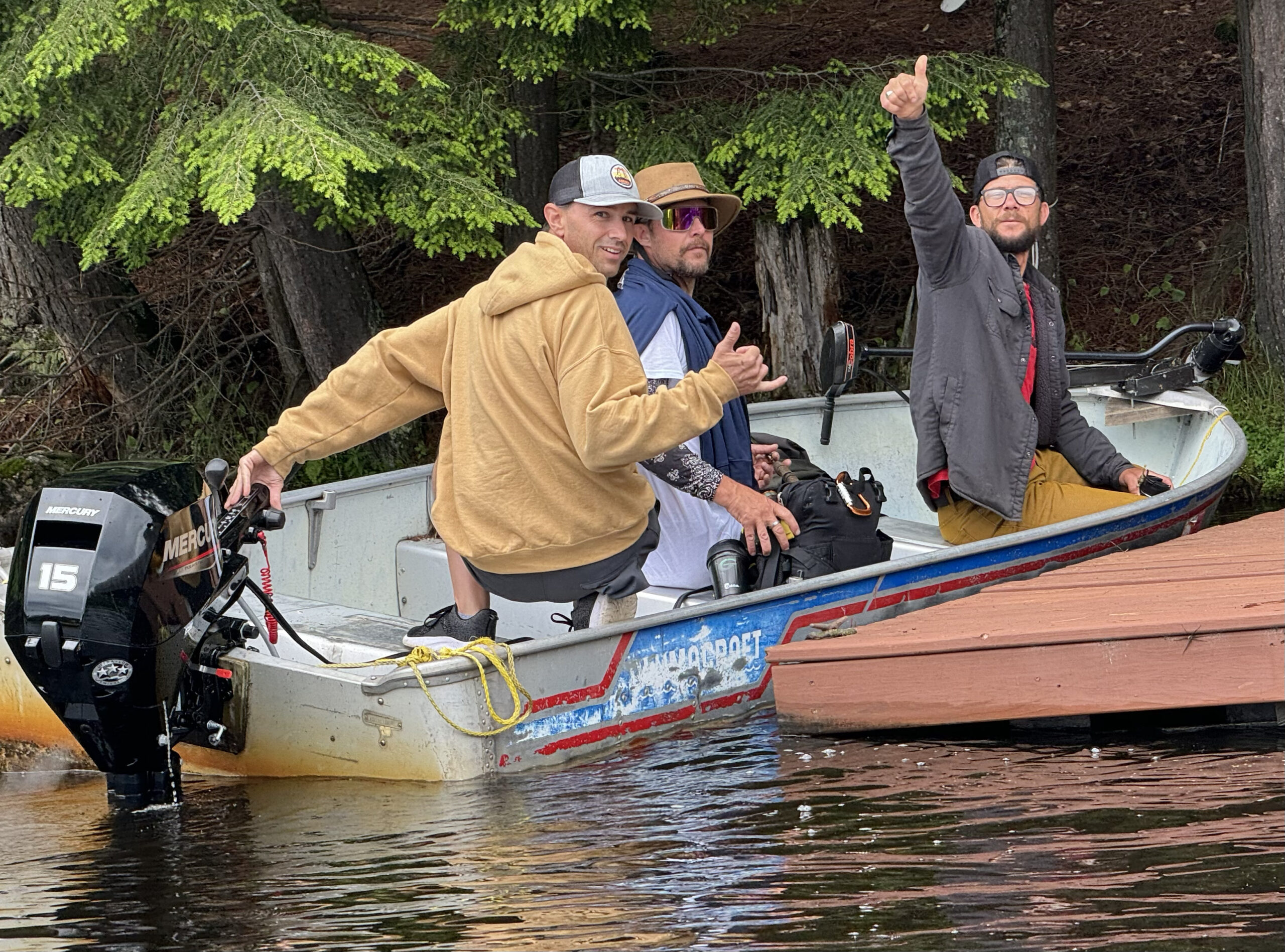
We needed transportation for our son to get to work. EVs were not in our price range, so we purchased a 10-year-old beater Acura sedan for $5,000.
My primary lifelong hobby has been competitive trick water skiing. I even have an age-group national championship to show for my efforts. My practice boat is a 2019 Correct Craft Ski Nautique with a 343-hp V8 engine. We only run the motor for ~40 hours/season, so we are not burning a lot of gas. At age 84, I can now barely get up on water skis and can no longer trick ski. However, I have 12 grandchildren and now 2 great-grandchildren who ski. Five of my grandchildren skied last year with our little local water ski show team. Four of my grandchildren skied in the shows this year. We also got our two 3-year-old great-grandchildren up on skis this year for the first time (See Figure 6). You can see why we are not anxious to stop water skiing in our family.
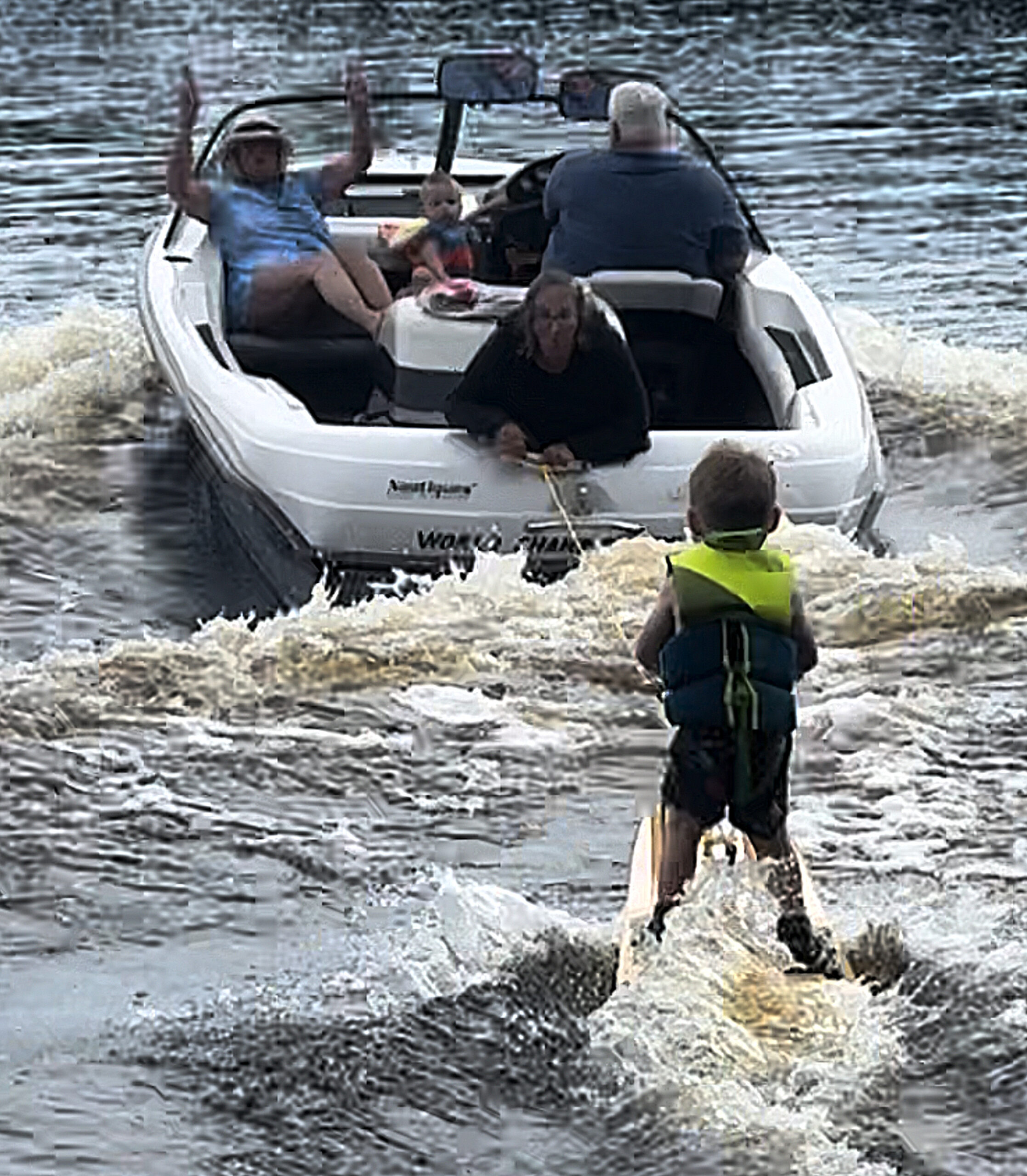
However, what could I purchase to convert our water skiing to clean energy? This year, for the first time, Correct Craft is offering two ski boat models powered by battery electricity. However, these electric boats cost over $200,000 and have a run time of only 2 hours. Needless to say, this is out of reach for me.
In Utah, I heat my home and water with fossil gas. In Wisconsin summers, we do very limited heating with fossil gas and our water and hot tub are heated by resistance electric. I would love to convert all my home and water heating to heat pumps, but they are out of reach for me on my retirement income.
Tesla Referral Program
If you are buying a new Tesla, Tesla has reactivated its referral program. If you find any of my articles helpful to you, please use my referral link: https://ts.la/arthur73734 (be sure to use it when you make your order). If you are buying a new Tesla and use my link, I believe you’ll receive $1,000 off the purchase price of a Model S or X, or $500 off the price of a Model 3 or Y. You will also get 3 months of Full Self-Driving (Supervised). Just be prepared to intervene immediately if it screws up.

Have a tip for CleanTechnica? Want to advertise? Want to suggest a guest for our CleanTech Talk podcast? Contact us here.
Latest CleanTechnica.TV Videos
CleanTechnica uses affiliate links. See our policy here.
CleanTechnica’s Comment Policy





